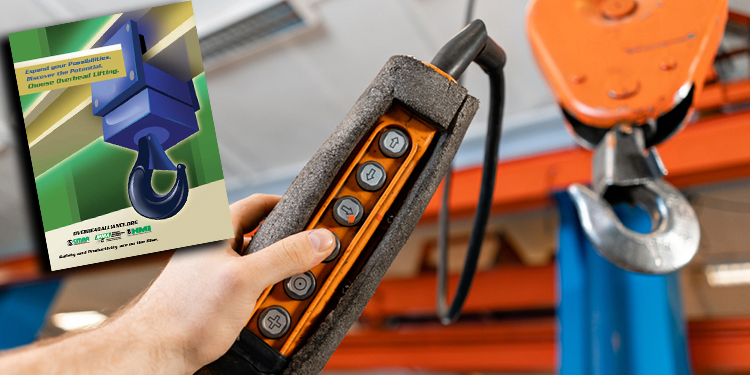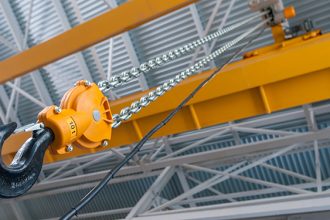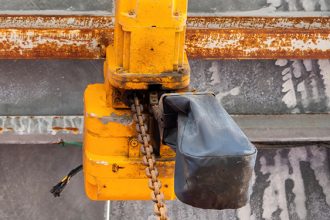Use Remote Controls For Precise Movement, Safe Distance Operation During Overhead Load Handling

This is the second in a series of posts detailing 13 reasons why overhead lifting and handling technologies — specifically cranes, hoists, and monorails — can improve a manufacturing or distribution operation’s efficiency, productivity, safety, and sustainability. Read more in the free Overhead Alliance publication, “Expand Your Possibilities. Discover the Potential. Choose Overhead Lifting.”
Raising a load up-up-up into the air is the “easy” party of operating overhead cranes, hoists, workstation cranes, and monorails in manufacturing and distribution facilities. Where it gets more challenging, and potentially more collision-prone, is safely and precisely maneuvering the load throughout the operation and successfully lowering and placing it at its target destination.
For maximum control while directing the crane’s function from a safe distance, remote wired or wireless controls enable the operator to guide and direct the equipment — either several feet away on the floor, or from an elevated platform for a bird’s eye view of the load. At their most basic, controllers come in three different types:
- Wireless remote controls that utilize laser, radio, or infrared signals to relay function instructions to the system.
- Wired, push-button pendants — also referred to as a pendant stations — connected to the system at a distance.
- Completely automated controls that utilize sensors and computerized controls pre-programmed to perform specific actions when triggered.
Controllers come in a variety of styles and offer a broad range of functions, from very simple to extremely complex. These include pendant or wireless operating systems for carefully spotting loads to highly automated systems that manipulate loads with the precision of one-thousandth of the rated speed. Regardless of the specified type, these devices enable the operator to direct the overhead crane, hoist, and monorail through a production process, to or from shipping and receiving docks, or for placement of finished products on outbound cargo trailers or railcars.
Further, both types of controllers reduce the chance of injury by enabling the lifting system operator to maintain precision control while keeping him or her out of harm’s way. The devices also significantly reduce the risk of a load being accidentally navigated into employees, walls, obstacles, or other machinery. This is particularly the case when an operator is directing the 90-degree maneuvers often required of bridge cranes, gantry cranes, and workstation cranes. Likewise, monorail controllers ensure that these track-based systems precisely deliver and position their payload as they travel from point to point along a set path.
Ultimately, whether an overhead lifting system is outfitted with push-button pendants, wireless remote controls, or completely automatic controls, they will deliver precise load control for a safer operation.
What other safety and productivity benefits can your operation gain from deploying overhead handling technologies? MHI’s Overhead Alliance — which includes the Crane Manufacturers Association of America (CMAA), the Hoist Manufacturers Institute (HMI), and the Monorail Manufacturers Association (MMA) — details 13 different ways these lifting solutions benefit manufacturing and distribution facilitations in the free publication, “Expand Your Possibilities. Discover the Potential. Choose Overhead Lifting.”



